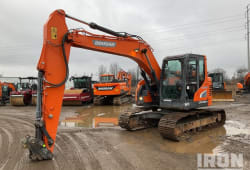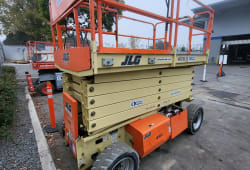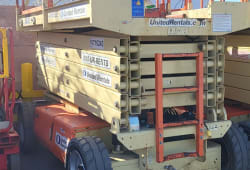Construction Estimates & Estimating Software: Top 10 Tools for Accurate Bids in 2025
4 Lectura mínima
)
mayo 24, 2025
Accurate construction estimates are the foundation of every successful project. Whether you're building a single-family home or a commercial facility, underestimating costs can erode profits, delay timelines, and damage client trust. In 2025, more contractors and construction professionals are turning to technology to refine their estimating process. That's where construction estimating software comes in, streamlining bids, automating calculations, and improving accuracy. In this guide, we'll explore the importance of precise estimates, the role of estimating software, and the top 10 tools that can transform your workflow.
What Are Construction Estimates?
Construction estimates are detailed projections of the total cost of a project. These estimates consider materials, labor, equipment, overhead, and contingencies. There are several types of construction estimates:
Preliminary Estimates: Early-stage ballpark figures.
Detailed Estimates: Itemized breakdowns for bids.
Bid Estimates: Competitive estimates submitted for winning contracts.
Precise estimates help contractors secure jobs, control costs, and manage client expectations. They're also crucial for maintaining profitability and avoiding legal disputes.
Challenges in Traditional Construction Estimating
Traditional estimating methods, like spreadsheets or manual calculations, pose several challenges:
Human Error: Miscalculations can lead to budget overruns.
Time-Consuming: Manual processes slow down bidding.
Inconsistent Pricing: Lack of real-time material and labor cost updates.
Collaboration Gaps: Sharing files and updates is clunky and unreliable.
These issues make it harder for contractors to scale their operations or remain competitive.
Why Use Construction Estimating Software?
Modern construction estimating software solves many of the issues associated with traditional estimating. Here's how it helps:
Automation: Speeds up takeoffs and calculations.
Accuracy: Minimizes errors with built-in cost libraries and templates.
Real-Time Data: Access to updated material and labor pricing.
Cloud-Based Collaboration: Teams can work from anywhere.
Professional Reports: Generates polished proposals and estimates.
Whether you're a general contractor or a specialty trade, using construction estimating software gives you a competitive edge.
Top 10 Construction Estimating Software in 2025
:format(webp))
ProEst
Cloud-based with prebuilt databases and integrations.
Best for: Medium to large contractors.
Buildertrend
Combines estimating with project management tools.
Best for: Residential builders and remodelers.
STACK
Great for digital takeoffs and estimating.
Best for: Commercial contractors.
PlanSwift
Drag-and-drop interface for fast takeoffs.
Best for: Estimators looking for customizable tools.
Clear Estimates
Simple interface with updated cost data from RemodelMAX.
Best for: Small contractors and remodelers.
Sage Estimating
Powerful and customizable enterprise solution.
Best for: Large-scale construction firms.
Contractor Foreman
Affordable all-in-one solution.
Best for: Small businesses and solo contractors.
Houzz Pro
Offers estimating, invoicing, and client management.
Best for: Design-build firms and interior remodelers.
RedTeam
Built for commercial contractors with strong financial tools.
Best for: Mid-sized commercial builders.
Jobber
Estimating and scheduling tool for service-based contractors.
Best for: Landscaping, plumbing, HVAC, etc.
How to Choose the Right Estimating Software
When selecting the best software for your construction business, consider these factors:
Budget: Some tools are subscription-based; others offer lifetime licenses.
Features: Look for takeoffs, reporting, mobile access, and integrations.
Ease of Use: Software should reduce complexity, not add to it.
Support & Training: Look for options with tutorials, live chat, or onboarding support.
Scalability: Choose a solution that grows with your business.
The Future of Construction Estimates
The future of estimating lies in automation, AI, and Building Information Modeling (BIM). Smart tools will not only calculate costs but also predict risks, compare vendor pricing in real time, and suggest cost-saving alternatives. Staying current with these innovations ensures your estimates stay competitive and profitable.
FAQs
What is the most accurate construction estimating software? ProEst and STACK are widely regarded for accuracy due to their real-time databases and customization features.
Can free software handle large construction projects? Free tools may suffice for small projects, but larger jobs often require the robustness of paid solutions.
Do I need software if I only do small jobs? Yes-even for small jobs, software improves speed, professionalism, and accuracy.
Conclusion
In 2025, construction estimating is no longer a guessing game. With the right estimating software, you can produce accurate, professional bids in less time and with fewer errors. Whether you're a seasoned pro or just starting out, investing in one of the top 10 construction estimating software tools can elevate your business and give you a serious edge in a competitive market.

Post acquisition of Boom & Bucket, the company he founded, Adam now leads Marketplace Growth for Ritchie Bros.














